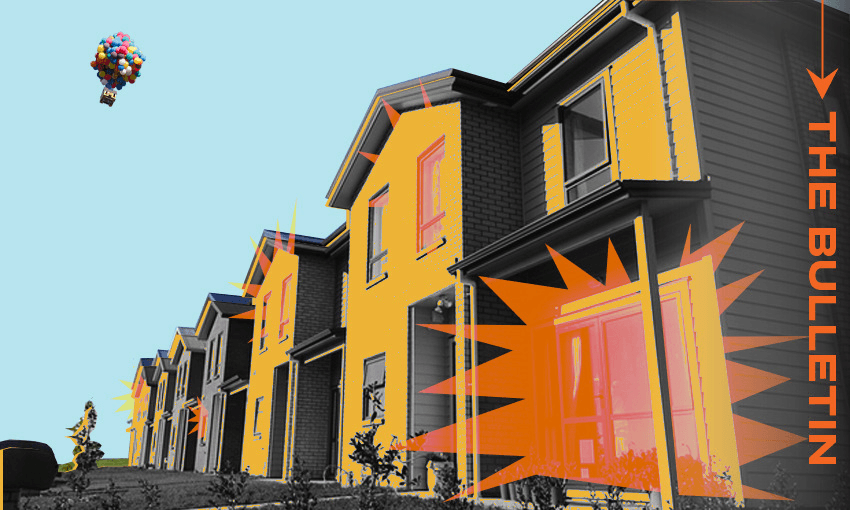The government hopes its new list of approved overseas building materials will push down construction costs across the board, writes Catherine McGregor in today’s extract from The Bulletin.
To receive The Bulletin in full each weekday, sign up here.
New rules aim to break building product monopolies
More than a year after it was first floated, the government is today releasing its long-awaited list of approved international building products, promising to give the construction sector faster, cheaper and more flexible options. The Building Product Specifications document will include thousands of overseas-made materials – from windows and cladding to multiple brands of plasterboard – that are automatically cleared for use in New Zealand if used as intended.
Building and construction minister Chris Penk says the list marks the beginning of the end for “costly monopolies” in key materials. Later this year, a further change will see plumbing products certified under Australia’s Watermark scheme automatically permitted here. Master Builders and developers have welcomed the list, saying greater choice and streamlined approvals could ease delays, reduce costs and improve supply chain resilience.
NZ’s reliably high construction costs
Aotearoa has long been an expensive place to build – especially recently, with research from QV showing construction costs rose 44% in the last four years. But the government is betting that more competition in building products will help reverse that trend. Penk described the current cost of construction as “frankly outrageous”, noting it is 50% more expensive to build a standalone home in New Zealand than in Australia. Builders have also warned that recent price hikes of up to 7% on key products, including plasterboard and insulation, could add tens of thousands of dollars to the price of new homes in the coming years, RNZ’s Anan Zaki reports.
However, experts also note that the factors behind the high prices are complex. A weak New Zealand dollar, international tariffs and geopolitical instability (particularly in Ukraine) continue to drive up costs for imported materials, on which the sector heavily depends. While the government’s reforms may improve access, it could be some time before the benefits meaningfully affect the price of new-build homes.
The plasterboard problem
Nowhere is New Zealand’s reliance on a single supplier more obvious than in the plasterboard market, where Fletcher Building’s Gib brand accounts for 97% of all sales. As management consultants Everedge have observed, the power of Gib lies primarily in its suite of intangible assets, including brand familiarity so high that the name has become genericised and building consent forms regularly specify Gib products as a matter of course. As Stuff’s Daniel Smith reported in his deep dive into the questionable tactics used by Gib to protect its market share, the company is also known for aggressively using rebates to encourage sales reps and merchants to promote the brand over its rivals.
The 2022 Gib shortage, when builders were forced to pay “six times the normal price” to finish the job, laid bare the risks of monopoly, Penk said yesterday. Although Fletcher Building has since opened a new factory in Tauranga to shore up supply, New Zealanders still pay 38% more for plasterboard than Australians and up to 67% more than Americans. Under the new product approval list, alternatives certified for use in Australia, the UK or the US will now be automatically accepted in New Zealand.
A pause on code changes brings welcome certainty
Yesterday’s curtain-raising announcement was accompanied by another major regulatory shift. As Luke Malpass reported for the Sunday Star Times (paywalled), the Building Code is being frozen, at least for a while. From now on, significant updates to the code will occur on a fixed three-year cycle, aligning with Australia’s system. The aim, according to Penk, is to give builders “certainty and stability in difficult times”, and avoid the confusion and cost of piecemeal updates.
While the government retains the right to make urgent safety changes – as seen after the Loafers Lodge fire – Penk says this new system will allow industry and regulators to better prepare and respond. It’s the latest in a wave of construction sector reforms intended to remove bottlenecks and prepare the industry for what the government hopes will be a strong recovery later this year.
Subscribe to NameEmailSubscribe

